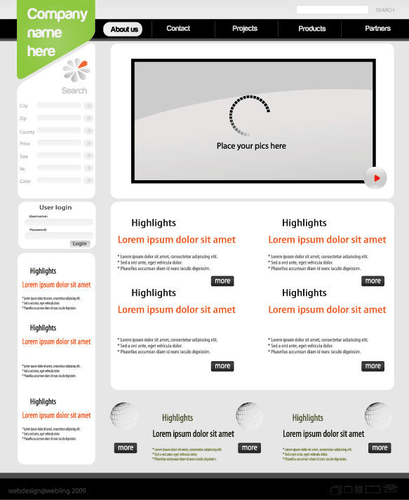How to Calculate Total Manufacturing Cost Formula + Step-by-step Guide

Besides being a figure on the balance sheet, total manufacturing cost gives valuable insights into the efficiency of your production processes. This information, then, helps companies identify areas where a few dollars can be saved, or operations can be streamlined. It also ensures that products are priced competitively while still allowing for a healthy profit margin. For example, rent and insurance on the manufacturing plant are based on the assets’ value, not on the number of units produced. Before calculating the direct labour costs per unit you need to know how to calculate the direct hourly labour rate and direct labour hours. Production costs include manufacturing costs as well as outside costs, such as marketing spend and office supplies.
Determine Allocation Method (e.g., machine hours, labor hours)
Because the closing carrying balance is used as the starting balance for the following period, it belongs to the previous accounting period. Additionally, implementing the necessary changes will boost the business’s net profits. In general, COGM provides the business with critical information about the total manufacturing cost formula cost variables. Management can evaluate each component of the COGM formula when it is fully aware of what a company is generating. Hence, the TMC incurred by the company in a quarter is $ 30,650, while the TMC per unit is $6.13. Find the right balance to build a profitable and sustainable dropshipping business.
- In other words, the direct labor costs that go into the total manufacturing cost calculation are only made up of staff directly involved in the production part of the business.
- This includes wages, bonuses, and benefits paid to workers who are actively engaged in producing goods.
- In conclusion, accurately calculating and interpreting total manufacturing cost is a cornerstone of successful manufacturing operations.
- Cloud solutions enable you to work from anywhere, at any time, meaning you shouldn’t miss a trick when it comes to spend.
- Regular security audits can identify vulnerabilities and ensure compliance with industry regulations.
Step 1: Calculate direct hourly labour rate
- Direct labor refers to the cost of labor directly involved in the manufacturing process.
- They might not be directly traceable to the finished product and wouldn’t typically appear on a bill of materials.
- Additionally, investing in automation for repetitive tasks can free up skilled labor for more complex operations, ultimately leading to a more efficient manufacturing process.
- Overheads directly impact a business’ balance sheet and income statement so it’s important to track and allocate these expenses.
- A low manufacturing overhead rate indicates that your manufacturing operations are utilising resources efficiently and effectively.
Calculating the cost of goods manufactured helps businesses determine the total cost incurred in producing goods ready for sale, aiding in pricing decisions and financial reporting. Direct labor refers to employees directly involved in production tasks, while indirect labor includes employees who support production indirectly, such as supervisors and maintenance personnel. Regularly reviewing supplier contracts and negotiating better terms can significantly impact your manufacturing costs. Suppliers often offer discounts for bulk purchases or extended contracts, which can reduce your material costs. Additionally, revisiting service contracts for equipment maintenance and utilities can uncover opportunities for cost savings. Calculating the total manufacturing cost requires a thorough understanding of all expenses related to manufacturing, both direct and indirect.
Significance of Calculating Cost of Goods Manufactured (COGM)?

Total manufacturing cost is a financial metric that expresses the total amount of funds spent on all production activities during a financial period. In plain terms, it is the total cost a company spends on manufacturing its products. As such, calculating TMC precisely is invaluable for anyone looking to gain more insight into their manufacturing cost accounting fundamentals. The Total Manufacturing Cost for one smartphone manufactured by ABC Electronics is $75. This cost encompasses all the expenses incurred directly and indirectly in the production process.
- Regular preventive maintenance can help reduce unexpected downtime, lower repair expenses, and extend equipment lifespan.
- They include factory utilities, rent, maintenance, depreciation of machinery, and indirect labor.
- To identify direct labor costs, you need to separate employees who play a direct role in the production line.
- Total manufacturing cost refers to the complete amount of money spent by a company on resources and its manufacturing operations in order to produce a finished good.
- It can be used to help you simplify, plan, budget, automate and accurately report on your operations.
- Let’s look into two practical examples that highlight the implications of mastering the total manufacturing cost formula in everyday business operations.
Understanding these components helps businesses calculate total manufacturing costs accurately. Here, direct materials would be fabric and thread, while direct labor takes into account the salaries CARES Act of seamstresses. Overhead costs might include the leasing of factory space and equipment depreciation. Again, calculating the total manufacturing cost allows the business to price their products effectively and assess profitability.
Examples could include glue, water, cleaning products, or any other materials used at some point during production. To calculate the total manufacturing cost per unit, we need to determine the manufacturing overhead cost per unit. Estimating manufacturing costs involves more than what may seem like just adding up expenses. It necessitates the accurate calculation of all cost components, which requires a thorough understanding of the entire production process, including every step and every expense, whether direct or indirect. Having a direct impact on the cost of goods sold (COGS), gross margins, and the ultimate net profit, total manufacturing cost is a critical metric. When monitored closely, it can help identify inefficiencies and improve business outcomes.

What is Direct Labor?

This calculation provides insight into how much it costs to make your product, identifying any underlying inefficiencies or exorbitant expenses. Indirect costs include expenses like utilities, rent, maintenance, and indirect labor. For example, electricity powering machines, factory rent, and salaries for staff who don’t directly work on production are all considered overhead costs. For example, if you use 100 units of material that costs $5 each, the total cost for that material is $500. Direct Labor refers to the wages paid to workers who are directly involved in manufacturing the product.
How to Calculate Total Manufacturing Cost in Practice
One other staff member – a specialist coffee roaster – earns $35 per hour, with payroll taxes of $5 per hour and $3 fringe benefit costs per hour. Richard has two staff members who earn $25 per hour, their payroll taxes costs $5 per hour and they have $3 worth Restaurant Cash Flow Management of fringe benefit costs per hour. When looking to substitute materials for a lower-cost alternative, always ensure you are not compromising the quality of your product and potentially damaging your brand.
